How to draw ellipses in perspective step-by-step.
- How to Draw Ellipses in Perspective
- Step 1 | Draw a box with a 2-point perspective
- Step 2 | Divide the front face into 4 equal parts and find the center.
- Step 3 | Draw the Minor axis going through the Vanishing point and the center.
- Step 4 | Find the middle of each edge of the square
- Step 5 | Trace your ellipse!
- Step 6 | Optional: Check that the Major axis is Perpendicular to the Minor axis
- Step 7 | Check that both the minor and major axis is the Symmetry axis of the ellipse!
- GOOD TO KNOW
How to Draw Ellipses in Perspective
If you wonder what is an ellipse, it is basically a circle in perspective.
For example, if you see a cup from the top, you see a circle.
If you hold the cup below your eyes, you’ll see an ellipse!
Knowing how to use ellipses will be great for you to start drawing things such as glasses, bottles, bowls, wheels… basically cylinders and offset.
However, you will need to know how to draw a box in perspective first. If you don’t know yet, I invite you to watch this first: How to draw a cube with a 2-point perspective.
Step 1 | Draw a box with a 2-point perspective
We will use this box with a 2-point perspective as a base for the ellipse drawing.
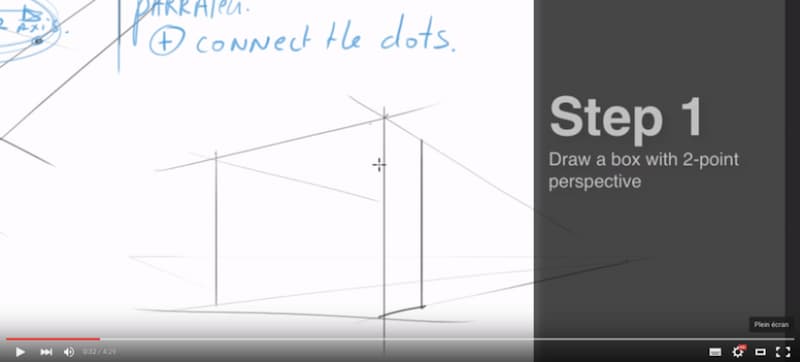
Step 2 | Divide the front face into 4 equal parts and find the center.
Remember to use foreshortening.
In this picture, I use my eye estimation.
DRAWING TIP:
If you want to find the perfect spot, draw the diagonals first.
Their intersection will be the center.
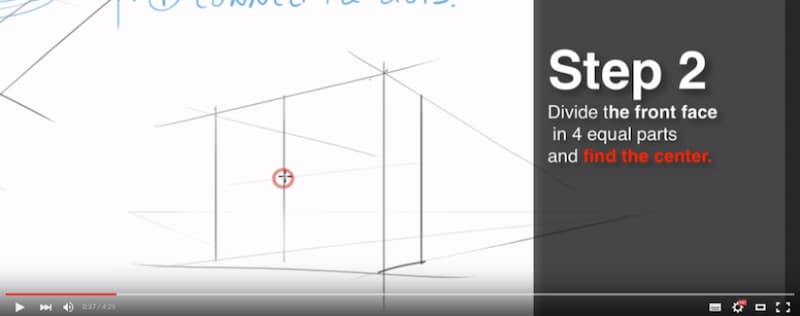
Step 3 | Draw the Minor axis going through the Vanishing point and the center.
Far behind on the right, you have the Vanishing point.
This is the start of this blue arrow (called the converging line).
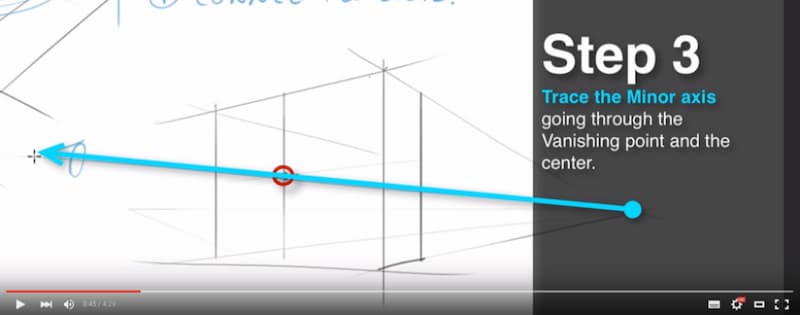
Step 4 | Find the middle of each edge of the square
Spot where the box gets divided at each edge.
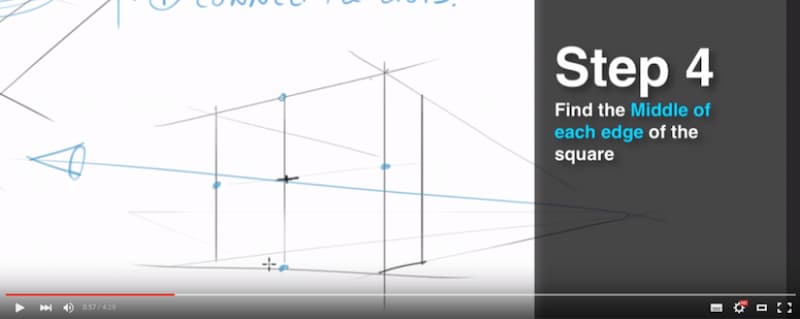
Step 5 | Trace your ellipse!
Draw the ellipse following these 2 conditions:
- Connect the 4 blue dots
- Get the blue arrow (Minor axis) as a Symmetry axis
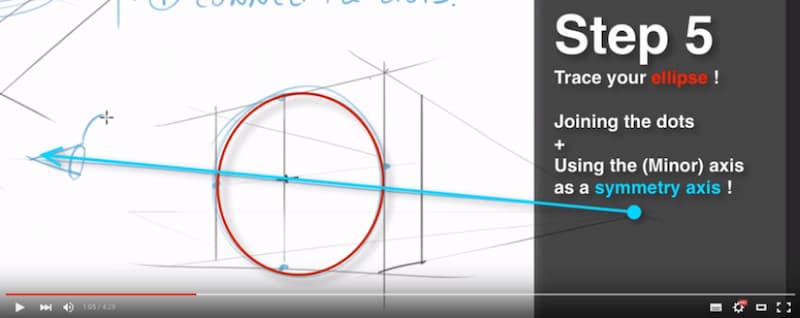
Step 6 | Optional: Check that the Major axis is Perpendicular to the Minor axis
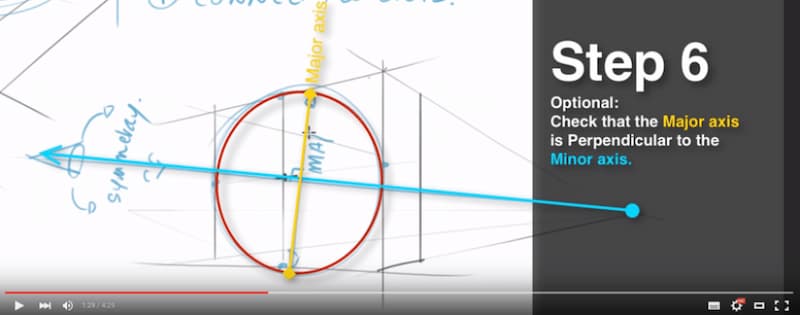
Step 7 | Check that both the minor and major axis is the Symmetry axis of the ellipse!
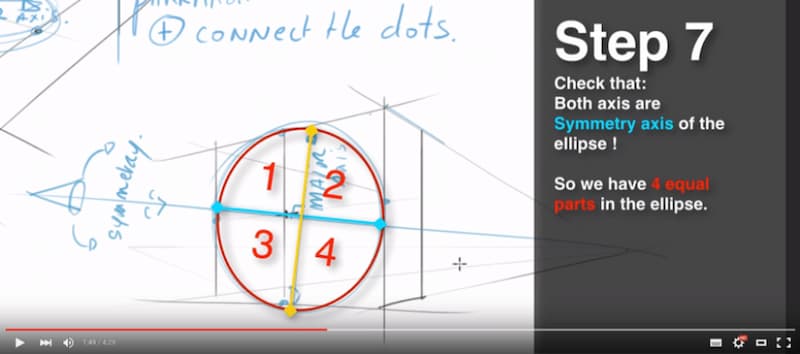
GOOD TO KNOW
- The Minor axis is the shortest distance of the ellipse.
- The Major axis is the longest distance of the ellipse.
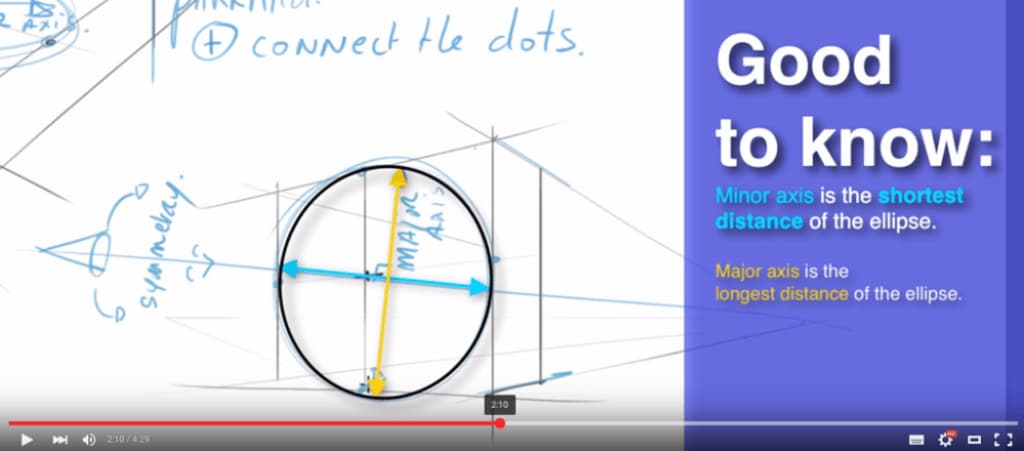
Take a pen, explore multiple angles of the box,
and draw many ellipses from different angles!
To complete this tutorial,
I have created a video on How to draw ellipses freehand.
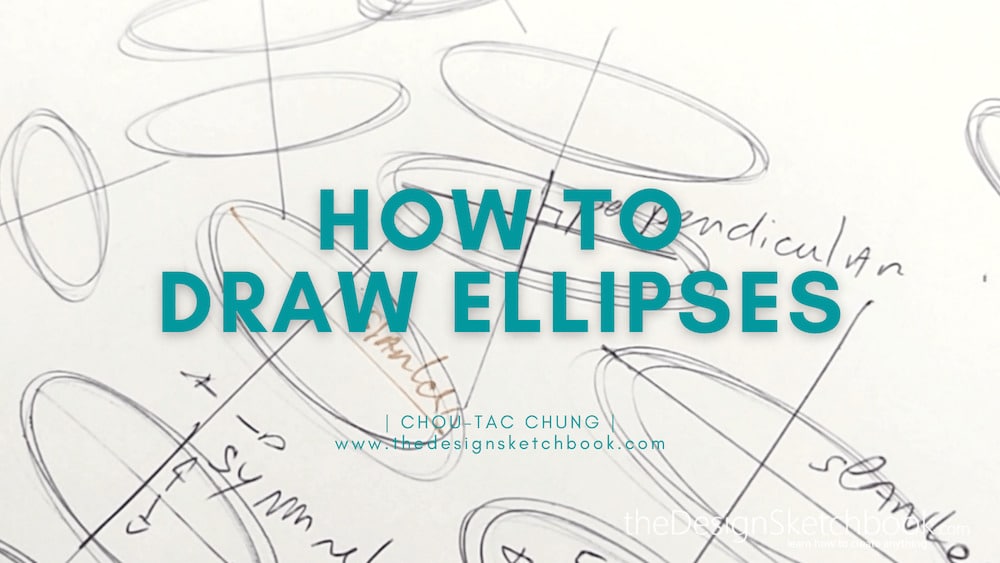
See you there!
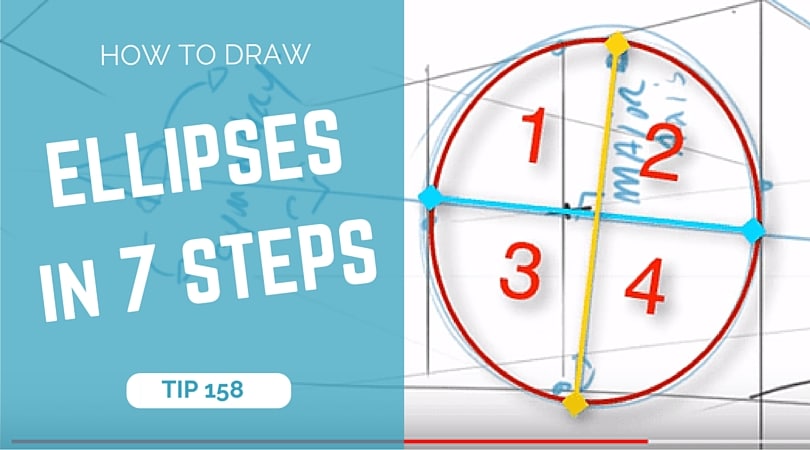
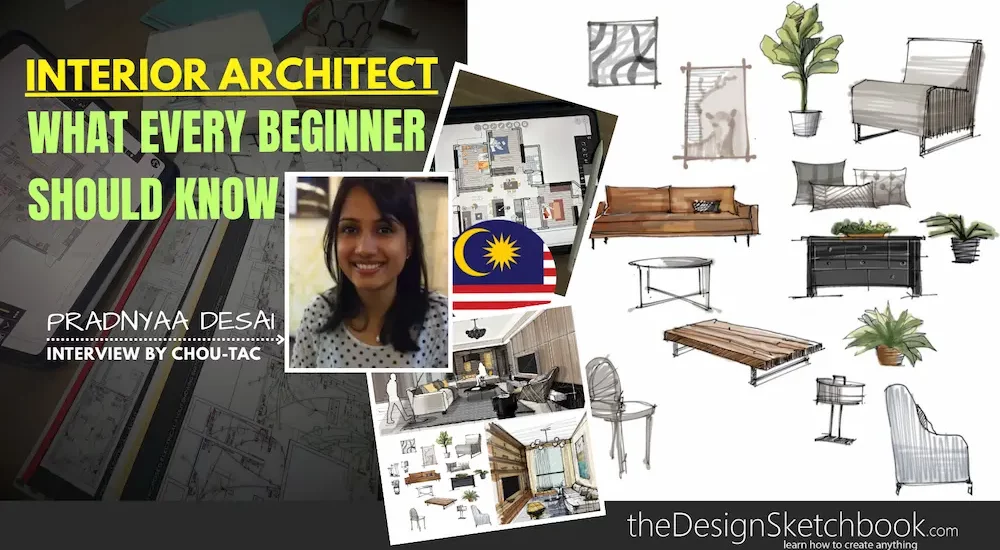
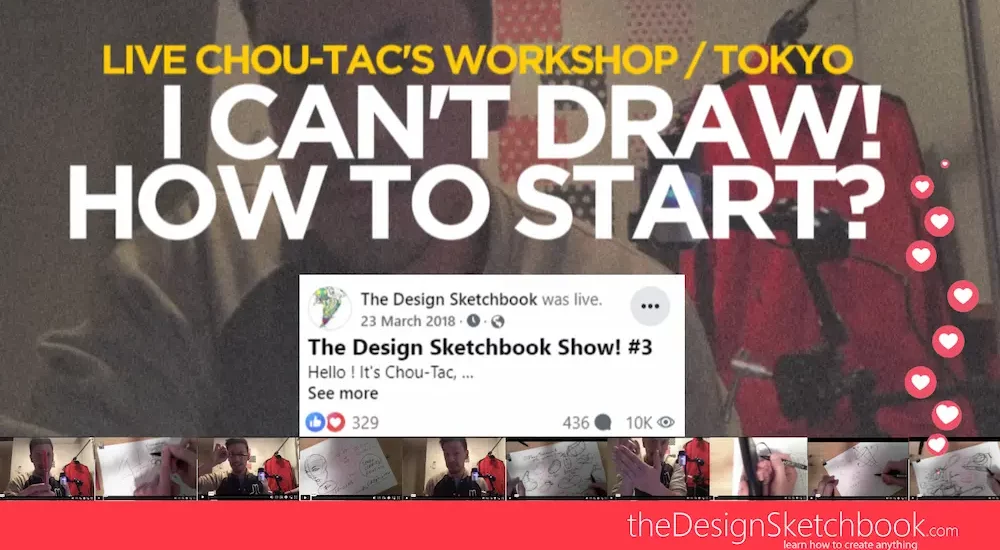





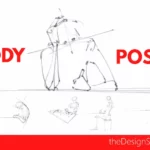

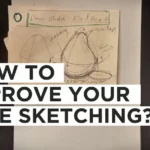
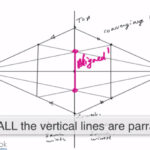
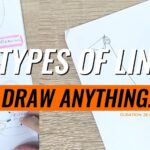
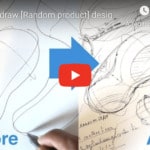


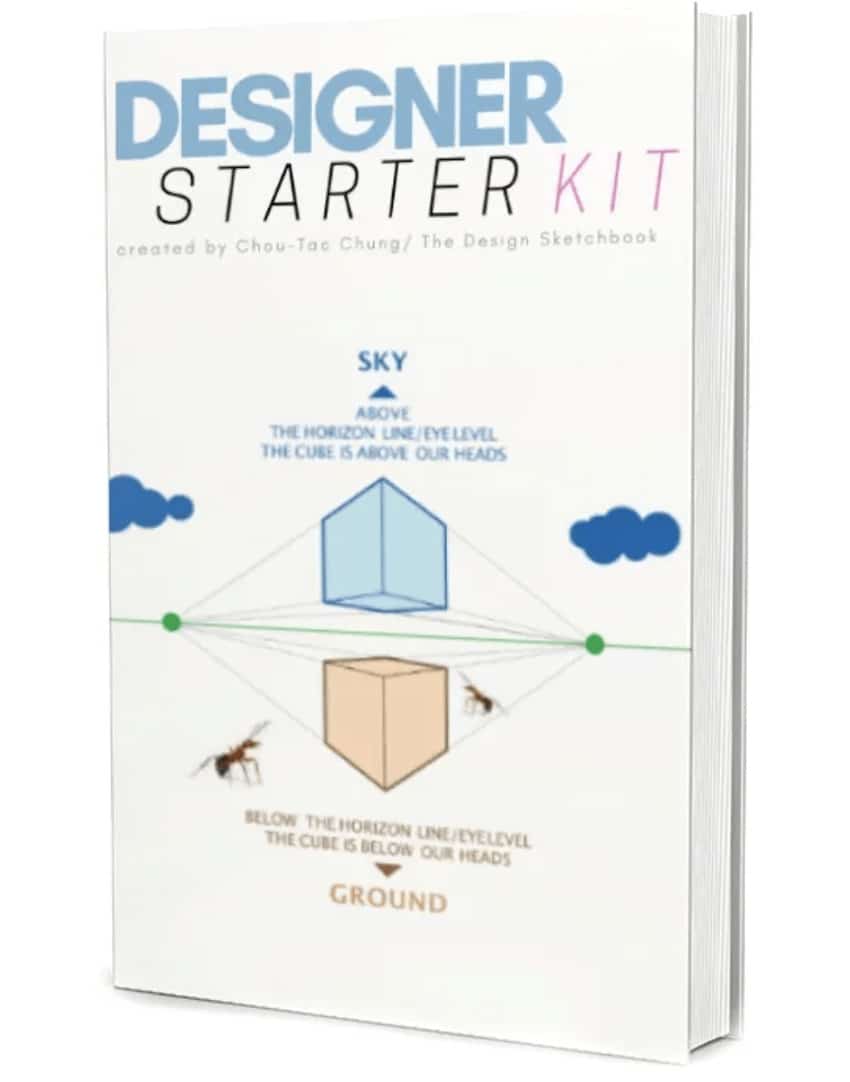
Thank you!
In fine I understood how to draw the minor axis. But it doesn’t work with ellipses in the rectangle. How to draw those? Just with four points in the middle of every side?
Hello Julia,
this tutorial works for circle inside a square only. :)
Hi Chou-Tac,
Thanks for the tips…Any chance in having a quick explanation of using eye level perspective to draw complex objects
Hello Rooben,
In few words, you have to SIMPLIFY complex objects in multiple simple one. To do that, you need to ignore the details, colours, logos… Think” “structure”.
For example, if you create a new way to ride a bike, draw the “architecture” of the bike. Focus on how it works, how people will ride it. Then only you will spend more time on the shape and details of the bike. It’s convenient start drawing a side view so you can get the proportion. Later your challenge will be “transposing” this side view in perspective.
There is multiple ways to start a project, but this one is pretty efficient.
About the eye level, it’s all the same as what you can find in the Designer Starter Kit for a cube.
Thanks Chou-Tac,i will apply this methodology and try to avoid getting distracted by details.
Good stuff Chou-Tac!
I feel it’s worth adding that we usually draw ellipses to present CIRCLES in perspective. As a result, the bounding box needs to be a SQUARE in perspective. If accuracy is important, you may need to use a few more steps and construction techniques in your sketch. Personally I need more practice with this, but I’m down on the theory involved.
Cheers – Luke
Hey Luke, you are right it’s worth mentioning the Circle. Thanks !
Hi Chou-Tac,
Great tip! By drawing the cube in perspective first you eliminate the guesswork as to how open the bottom ellipse should be compared to the top.
thank you and keep it up,
cheers,
Nick
My pleasure Nick !
I agree, it’ all about eliminating the guesswork.